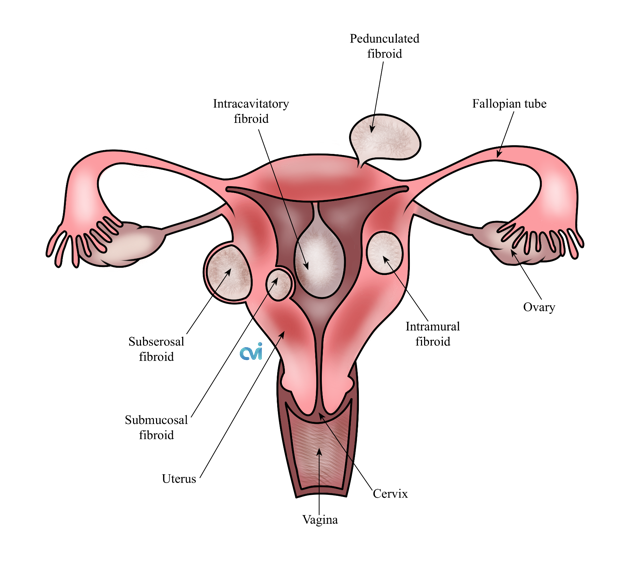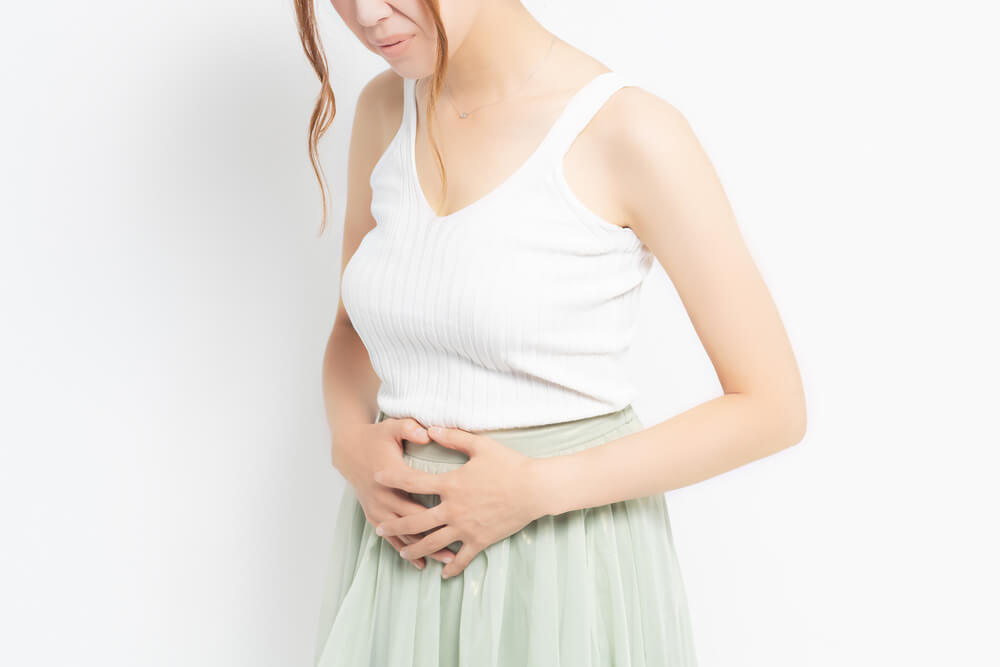Uterine Fibroid Overview
Uterine fibroids are common and affect as much as 80% of women by the time they turn 50 years of age.1 However, most women may never even know they have fibroids because not all fibroids are symptomatic, and so they may go unnoticed.
Fibroid commonly appear during the childbearing age and they can be as small as a fruit seed, giving no apparent signs of its presence. In other women however, it could grow as large as a watermelon, giving the impression of a late stage pregnancy.
What Are Uterine Fibroids?
Fibroids are benign tumors that affect different layers of the uterus. These tumors arise from the smooth muscles of the uterus, therefore earning the name “leiomyoma.” They are not cancerous and can appear either as a single isolated tumor or a group of tumors with varying sizes and locations. The probability of having a cancerous uterine tumor is less than 0.5%, perhaps even rarer than that.2 These fibroids require blood flow to thrive and they receive most of their blood supply from the uterine artery, which allows them to continue to grow in size if untreated.3
Calcified Fibroids
When fibroids grow larger than their blood supply parts of the fibroid can die forming calcifications. These calcifications cause the fibroid to harden and form into what is called a calcified fibroid.4 Calcification of fibroids however is more commonly seen in older or menopausal women. What is the big deal? If the fibroid is large and left untreated it is at risk for calcifying. If a large fibroid uterus is left without treatment and the fibroid calcifies, some of the bulk fibroid symptoms may persist. Women with calcified fibroids may not be a candidate for non-surgical treatments such as the UFE procedure. It may also be more difficult to treat with less invasive surgeries as well. If a fibroid progresses to the calcification stage and still symptomatic, the only treatment option left at that point may be a hysterectomy.
Fibroid Types

Fibroids can occur in different layers of the uterus, some locations are more common than others. Additionally, more than one type of fibroid commonly coexists in the same uterus.5
- Intramural fibroids develop within the muscular walls of the uterus
- Submucosal fibroids are the least common type of fibroids and are found in the inner layer (submucosa) of the uterus, bulging into the uterine cavity.
- Subserosal fibroids are located on the outside of the uterus, this is the most common type and tend to be noticed easily as they push against the pelvic wall and causing abdominal swelling.
- Intracavitary fibroids are on the inside of the uterine cavity causing heavy bleeding
- Pedunculated fibroids grow like an apple on a stalk and can be on the outside or in the cavity of the uterus
Fibroid Symptoms
A person with fibroid may have any of the following symptoms or signs:
- Painful intercourse
- Heavy and prolonged menstrual periods
- Anemia
- Constipation or bloating
- Painful menstrual cramps
- Lower back and pelvic pain
- Leg pain
- Frequency in urination from pressure of the fibroid on the bladder
- Infertility
- Abdominal distention
Fibroids may have one or more of these presentations and sometimes, none at all. If you are suffering from fibroid symptoms you should contact our fibroid specialist to see if you are a candidate for the UFE procedure. Surgery is not your only option but the larger the fibroids grow the more likely you will need a more invasive surgery.
Fibroid Risk Factors
Not every woman will have fibroids. But to be on the safe side, you should know if you are at a higher risk of having it. Risks of developing uterine fibroids include:
- Age and race – these are the two greatest risk factors. If you are 40 – 50 years, then you stand a greater chance. Also, people of African descent have a higher risk than other races. In fact, as high as 70-80% of fibroid patients are of African descent, 40% of whom will have painful cramps with a three times higher chance of anemia.6
- Obesity – higher body mass can contribute to increased hormonal activity
- Diet and lifestyle
- Family history of fibroids
- Pregnancy
- Hypertension
Fibroid and Pregnancy
Although for a majority of women fibroids don’t cause any issues with pregnancy, for other women fibroids can cause fertility issues. Possible pregnancy concerns are:
- Increase need for a cesarean section
- Baby being in a position inappropriate for vaginal delivery
- Unprogressive labor
- Preterm delivery
- Placenta separation from the uterus before delivery, also known as placental abruption
Fibroid Diagnosis
There are many ways to diagnose uterine fibroids depending on your circumstances, but it will usually involve an initial pelvic ultrasound scan. The best method to evaluate the fibroids, types and characteristics is by an MRI. This imaging modality can also determine if there is any other underlying cause for abnormal bleeding, such as adenomyosis. Our highly trained specialist obtains an MRI on every patient to ensure that each patient receives the best treatment option and the most successful outcome.
Symptom Checker
Fibroid Treatments
Some uterine fibroids may require surgical removal of the uterus, called Hysterectomy. In fact, as many as 200,000 hysterectomies are done in the United States alone, each year.6
The good news is that you don’t need to decide between living in pain and major surgery, as there are non-surgical options. Our fibroid specialist along with your OBGYN will determine the most appropriate treatment option for you. The goal is to treat the root cause of your fibroid pain to return your life back to normal as quick as possible. Options include:
- Uterine fibroid embolization (UFE)
- Myomectomy
- Hormone replacement therapy
- Birth control pills
- Hysterectomy
- Heating pads, ice packs, pain relievers
Uterine Fibroid Embolization (UFE)
UFE is a great treatment option for heavy or abnormal bleeding for fibroids compared to a hysterectomy or a myomectomy. With a hysterectomy, your uterus is surgically removed, and during a myomectomy, a team surgically removes your fibroids. UFE can help you get your life back without any scarring or hospital stay. It can reduce the size of your fibroids, relieve your symptoms, and retain your fertility. Most women can return to their normal activities in two to seven days.
How is the UFE Procedure Performed?
- You will receive twilight sedation to help you relax
- Our specialist numbs the skin on the wrist or groin
- A tiny catheter is placed
- Small beads are placed into the fibroid artery
- The catheter is removed
- Band-Aid is applied
- Recover at home
Read more about the UFE procedure (click here)

We are Here to Help
Request an appointment to meet with our fibroid specialist who will review your imaging, labs and history to determine if you are candidate for the procedure, and the outcomes you can expect. Each woman is an individual and should discuss the potential risks and benefits of fibroid embolization and other Treatments with our doctor to decide which option is best for her.
Appointments are available via an online video telehealth platform or in person at one of the offices in Los Angeles, Orange County or San Diego. Why should you choose us? Read here.
1.) Pavone D et al. Epidemiology and Risk Factors of Uterine Fibroids. Best Pract Res Clin Obstet Gynaecol. 2018 Jan; 46:3-11.
2.) George A Vilos et al. The management of uterine leiomyomas. SOGC Clinical Practice Guideline. No. 318, February 2015.
3.) Pelage, J.-P., Cazejust, J., Pluot, E., Le Dref, O., Laurent, A., Spies, J. B., … Lacombe, P. (2005). Uterine Fibroid Vascularization and Clinical Relevance to Uterine Fibroid Embolization. Radiographics, 25, S99–S117.
4.) Alex L., Charles, L.P, Peter, S. ‘On Incidence of calcified uterine fibroids’ American journal of Obstetrics & Gynecology. Vol.67, Issue 1, P(79).
5.)Stewart, E. A. (2001). Uterine fibroids. The Lancet, 357(9252), 293–298.
6.)EA Stewart et al. Epidemiology of uterine fibroids: a systematic review. BJOG 2017; 124:1501-1512.
The above information explains what is involved and the possible risks. It is not meant to be a substitute for informed discussion between you and your doctor but can act as a starting point for such a discussion.









